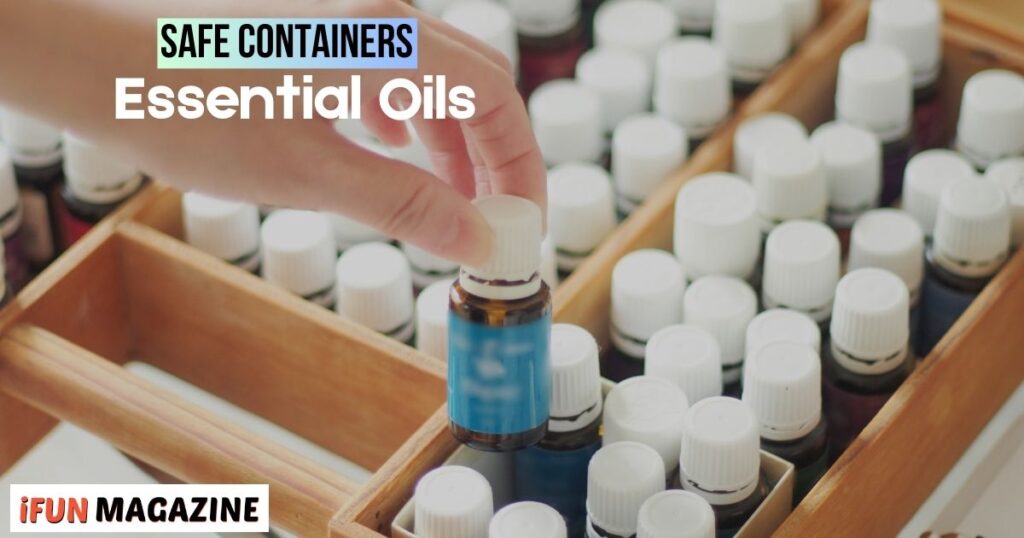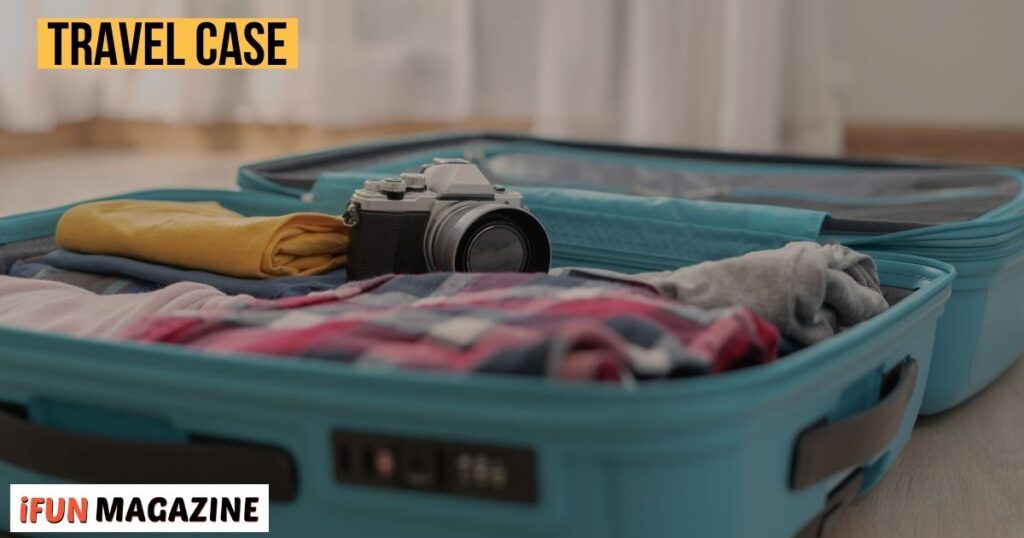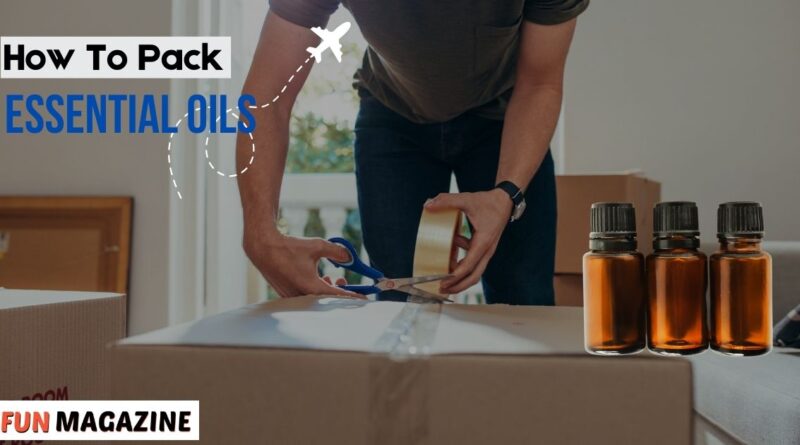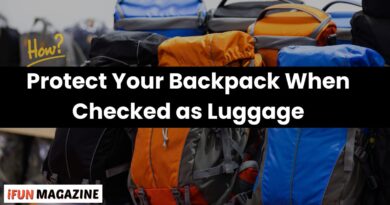Your comfort and well-being need to bring essential oils on your trip. While on the go, essential oils can support quantity, sleep, and relaxation. But there are some factors to consider. Improperly packing the oils might lead to spills and leaks.
TSA regulations also affect how you pack your oils. Knowing the rules can help you avoid security delays. This guide will help you pack your essential oils safely and follow travel rules.
TSA Guidelines for Essential Oils
Container Size:
The TSA (Transportation Security Administration) limits the amount of liquid you can bring in your carry-on bag. Essential oils and all other liquids must be kept in 100 ml (3.4 oz) or shorter containers.
Essential oils in containers over 100 milliliters cannot be carried in carry-on luggage. They must be included in checked baggage. Remember that the TSA has tight restrictions on essential oils, so you can avoid having your oils seized at security.
Transparent, Resealable Plastic Bag:
Essential oils must be packed in a clear, resealable plastic bag for use with your carry-on luggage. The maximum size of this bag should be 20 cm by 20 cm or approximately eight inches by 8 inches.
The bag should hold at least one liter of liquids, including gels, lotions, shampoos, and essential oils. As soon as you pass security, you must remove the bag from your luggage and place it in a container for inspection. This speeds up and simplifies the security process for you and the airport staff.
Packing Essential Oils in Checked Baggage
Sealing for Safety:
It is important to take extra precautions when packing essential oils in checked baggage. Essential oils can leak during travel if they are not loaded correctly. To prevent this, seal each bottle in a small resealable plastic bag or use specialized, leak-proof containers.
This keeps your oils safe and prevents them from leaking into your clothing or belongings. You can wrap your bottles in soft materials like bubble wrap or tissue paper for extra safety. This additional security measure may make you confident that your oils will not break while traveling.
Airline and Destination Restrictions:
Different airlines and destinations may have specific rules regarding liquids and essential oils. Some countries may have stricter regulations on what you can carry, especially with potent substances like essential oils. Always check the government website for your destination or contact your airline for updated rules before you travel.
This is especially important for international flights, as countries may have varying rules about bringing oils and other liquids into the country. By checking these regulations in advance, you can avoid any last-minute surprises or delays at the airport.
Choosing Safe Containers for Essential Oils

Preferred Materials:
- Opt for glass, steel, or HDPE when choosing containers for essential oils.
- These materials are safe and durable, protecting your oils from damage or contamination.
- The glass keeps the oils pure, while steel and HDPE are strong and resistant to breakage.
Avoiding Breakage:
- Essential oils can break easily, so use a travel case for extra protection.
- A case will protect your containers from bumps and prevent spills or leaks.
- This step ensures your oils arrive at your destination in perfect condition.
Traveling with Strong Scents
Consideration for Fellow Travelers:
The powerful fragrances of essential oils might only be to everyone’s taste. For those sensitive to strong scents, they can cause headaches, allergic reactions, or discomfort.
Traveling with essential oils should always be done with thought, especially when visiting tight spaces like buses, trains, or airlines. Ensure the containers are tightly sealed if you plan to carry them in your bag to prevent the smell from leaking. Everyone may have a more comfortable experience when you are mindful of your surroundings.
Do Not Open Essential Oils:
When traveling, avoiding opening essential oils on the plane or in small, crowded spaces is best. The scent of some oils is powerful and can spread quickly, which might disturb other passengers or travelers.
To prevent this, keep your essential oils tightly sealed throughout the journey. This includes during security checks, in the airport lounge, or on the flight. If you need to use them, wait until you’re in a private space where the scent will not affect others.
Using a Travel Case for Protection

Why You Need a Travel Case:
A dedicated travel case is crucial for protecting essential oils when traveling. Essential oils often come in fragile glass containers that can break easily. A travel case helps shield your oils from bumps, drops, and pressure during transit.
Your bottles can crack or spill without proper protection, leading to potential messes and wasted oils. A case also helps organize your oils, keeping them safe and accessible while traveling. Investing in a good travel case ensures that your essential oils arrive at your destination intact.
Features to Look For:
When selecting a travel case, look for one with compartments or individual slots for each bottle. This helps prevent the bottles from shifting around and crashing into each other, which could cause breakage. Padding inside the case is also essential for extra protection. Choose a case with a soft, cushioned material that will absorb any impacts and keep your oils secure.
Select a case with a waterproof exterior to protect against spills if possible. Additionally, make sure the case is compact and easy to pack in your luggage while providing enough space to hold all your essential oils safely.
Labeling Your Essential Oils
Why Labeling is Important:
Labeling your essential oils is crucial for organization and safety. Mixing up different oils when traveling is easy, especially if they look similar. Clear labels ensure you can quickly identify each bottle, preventing confusion or mistakes. Labeling is also essential for security checks at airports or customs.
It helps security personnel quickly identify your bottles’ contents, speeding up the inspection process. Proper labeling also ensures that your essential oils are recognized and that you avoid delays or misunderstandings during travel.
What to Include on the Label:
When labeling your essential oils, include the name of the oil, such as “Lavender” or “Peppermint.”
Also, write the oil’s specific contents (e.g., “100% Pure Lavender Essential Oil”).
This information will help you quickly identify the needed oil, especially if you carry several bottles. Additionally, make sure the label is clear and readable.
Use permanent markers or labels to resist smudging so the information stays intact. If you’re traveling internationally, it may also help to include the contents in multiple languages, depending on your destination.
How to Label Your Containers:
Use adhesive labels that stick well to the container, or create your labels at home.
You can purchase ready-made labels for essential oils or print your own if needed.
Be sure to label each bottle individually, especially if you have different types of oils in similar-sized containers.
It’s also a good idea to include the expiration date, if known, to ensure the oils are still safe to use.
FAQs
How do you pack essential oils for travel?
Pack essential oils in small, leak-proof containers. Seal them in a resealable bag for easy inspection. Label each bottle with the oil’s name and contents. Consider using a protective travel case to prevent damage during your trip.
Can essential oils go in checked luggage?
Yes, you can pack essential oils in checked luggage. Seal them in baggies or containers to prevent spills and ensure they are well-protected to avoid breakage. Check your airline’s specific rules for any restrictions on liquids.
How do you pack oil for air travel?
For air travel, use containers no larger than 100 ml. Place oils in a resealable plastic bag. Follow TSA rules and securely pack your oils to avoid leaks or spills. Label the containers for easy identification.
What is the best way to travel with oil?
The best way to travel with essential oils is to use leak-proof containers. Pack them in a padded travel case to prevent damage. Label each bottle and ensure they comply with TSA regulations for a smooth airport experience.
Conclusion
To pack essential oils for travel:
- Follow these best practices for safety and convenience.
- Pack small, leak-proof containers in a clear, resealable bag for TSA inspection.
- Ensure your oils are safely sealed to prevent spills, and consider using a travel case.
- Label each bottle clearly to avoid confusion and meet security requirements.
- Always check TSA guidelines, airline policies, and destination restrictions before packing essential oils.




